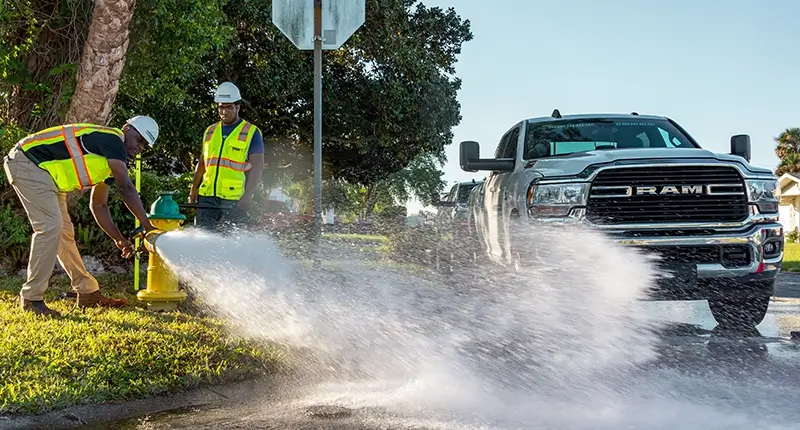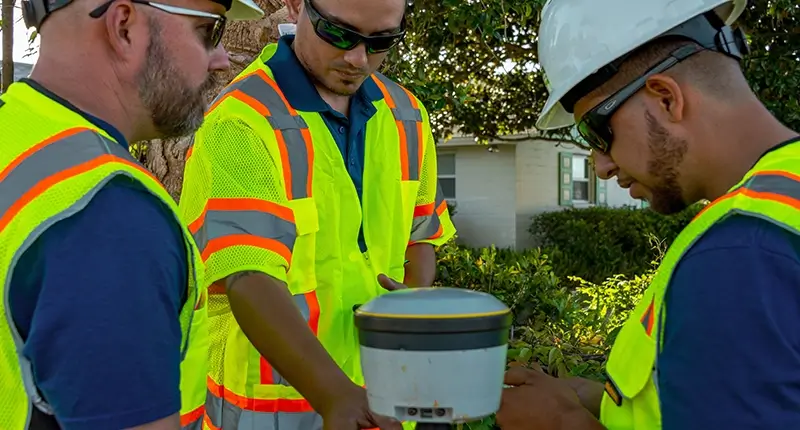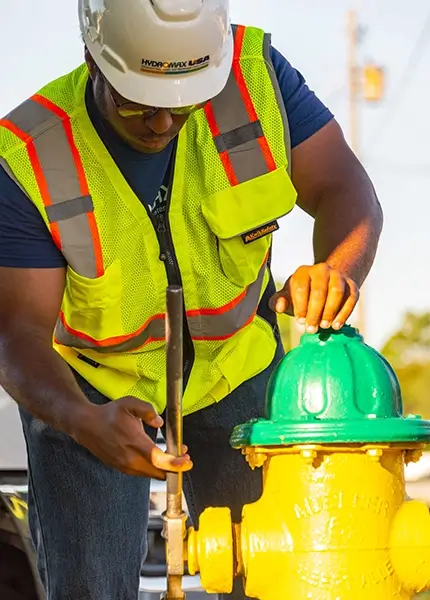Hydrant condition assessment and maintenance.
Our hydrant assessment programs establish schedules for repair and replacement through regular hydrant maintenance. For public health and firefighting operations, regular testing ensures hydrants are capable of delivering water at required pressures and flow rates.
understand the present | protect the future
System-wide programs optimize operations and assets.
Hydromax USA hydrant test procedures are conducted in accordance with AWWA M17 Fire Flow Testing and ISO procedures. The tests include detailed determination of both the flow and test hydrants, measuring of static and residual test pressures, conducting sufficient hydrant flow to adequately stress the system, and the necessary analyses to determine fire-flow capacities. We can conduct hydrant tests utilizing multiple flow hydrants under varying system boundary conditions to support engineering facility plan models and identify operational conditions.
Hydromax USA’s condition assessment and maintenance programs can provide:
- Complete inventory of distribution system hydrants mapped with sub-foot accuracy.
- Information on the current operating state of distribution system hydrants.
- Assurance of system hydrant and isolation valve operability, flow, and accessibility.
- Analysis of capital and O&M needs for improved planning and system performance.
- A foundation for COF/LOF failure impact studies and remediation prioritization planning.


Active remediation of system hydrants to restore functionality including:
- Hydrant tags and markers
- Hydrant painting
- Minor repairs
- Extensions
- Upper barrel repairs
- Lower barrel repairs
Our infrastructure condition assessment programs include:
- Pre-program consulting on Hydromax USA geospatial solutions.
- Review of current client water data model and CMMS system.
- Access to Hydromax USA – Project Operations Dashboard, providing near real-time project results and tracking.
- Locate and access each fire hydrant · Field locating, accessing, and exercise isolation valve.
- Check hydrant nozzle height for correct ground clearance.
- Identify the make, model, and year of hydrant manufacture.
- Identify hydrant main valve and hose/pumper nozzle sizes.
- Lubricate operating nut and all nozzle outlets with F.D.A. approved lubricant.
- Open hydrant with nozzle caps in place to check for seal leakage.
- Verify hydrant main valve completely closes.
- Flow hydrant, record working pressure, calculate flow rate, record static pressure.
- Leak sounding at each hydrant location.
- Tighten hydrant nozzle caps slightly more than hand tight.
- Clean and paint hydrant in utility-specified color including NFPA color schemes.
- Analysis of hydrant and isolation valve assessment results and creation of program evaluation report.
- Scheduled ESRI-compliant program data deliverables.
- Integration of work order data into most major CMMS systems.

Brochures:
Water services brochure (1 MB)
Decades of data expertise
As an ESRI Silver Partner, our technology center is home to a dedicated team of over 70 full-time GIS professionals who bring a wealth of expertise in the development of client dashboards. These specialists have decades of experience working with client infrastructure data from across the country providing client information management, infrastructure program analytics, and value-driven reporting.
2003
Two decades of experience
95M
Asset data points collected
70+
Data analysts, developers, and GIS specialists in our technology center
Esri
Silver Partner
Connect with a utility expert for a demo.
Submit your details below to learn more about our Advanced Field Services and Utility Solutions.